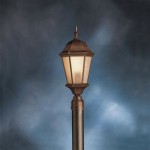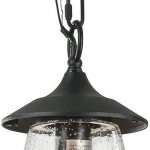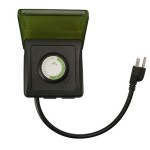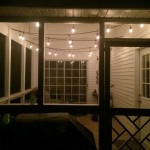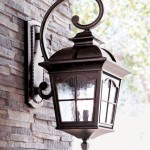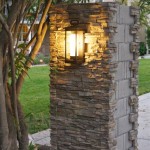Illuminating Homes with LED Outdoor Soffit Lighting
Outdoor soffit lighting, specifically using LED technology, has emerged as a prevalent method for enhancing the aesthetic appeal and functionality of residential and commercial properties. Soffits, the undersides of overhanging eaves, provide an ideal location for strategically placed lighting fixtures. LED (Light Emitting Diode) technology offers numerous advantages over traditional lighting options, including energy efficiency, longevity, and versatility in design. This article will explore the benefits, considerations, installation techniques, and applications of LED outdoor soffit lighting.
Benefits of LED Outdoor Soffit Lighting
The shift towards LED soffit lighting is primarily driven by its superior performance characteristics. Several key benefits contribute to its widespread adoption.
Energy Efficiency: LEDs consume significantly less energy than incandescent or halogen bulbs. This translates directly into lower electricity bills for property owners. The efficiency is measured in lumens per watt, where LEDs typically offer substantially higher ratios. For example, an LED bulb might produce the same amount of light as an incandescent bulb while consuming only a fraction of the energy. This reduction in energy consumption also contributes to a smaller carbon footprint, aligning with sustainability goals.
Lifespan: LEDs boast an exceptionally long lifespan compared to traditional lighting options. They can last for tens of thousands of hours, often exceeding 50,000 hours or more. This extended lifespan reduces the frequency of bulb replacements, saving property owners time and money on maintenance. The long lifespan also makes LEDs a practical choice for hard-to-reach soffit locations, where frequent replacements would be inconvenient.
Durability: LEDs are solid-state devices, meaning they do not have fragile filaments or glass enclosures susceptible to breakage. This makes them more resistant to shock, vibration, and temperature fluctuations, making them well-suited for outdoor environments. Their robustness ensures reliable performance even under challenging weather conditions.
Light Quality: LEDs offer a wide range of color temperatures and light outputs. This allows property owners to customize the lighting to achieve their desired aesthetic effect. From warm, inviting glows to bright, crisp illumination, LEDs can be tailored to suit various architectural styles and preferences. The ability to control color temperature is particularly important for creating an inviting ambiance around a home.
Low Heat Emission: Unlike incandescent bulbs, LEDs produce very little heat. This reduces the risk of fire hazards and minimizes energy waste associated with heat dissipation. The low heat emission also makes LEDs a safer option for soffit installations, where flammable materials may be present.
Instant On/Off: LEDs turn on instantly without any warm-up period. This provides immediate illumination when needed, enhancing safety and convenience. The instant-on capability is particularly beneficial for security lighting applications.
Dimming Capabilities: Many LED soffit lights are dimmable, allowing property owners to adjust the light intensity to create different moods and conserve energy. Dimming capabilities provide greater control over the lighting environment and allow for customized lighting schemes.
Environmentally Friendly: LEDs do not contain harmful substances like mercury, which is found in some fluorescent bulbs. This makes them a more environmentally friendly disposal option. Their reduced energy consumption also contributes to a smaller carbon footprint, further enhancing their environmental appeal.
Considerations for Selecting LED Outdoor Soffit Lighting
Choosing the appropriate LED soffit lighting requires careful consideration of several factors to ensure optimal performance and aesthetics.
Brightness and Lumens: The brightness of an LED fixture is measured in lumens. The required lumen output will depend on the desired level of illumination and the size of the area to be lit. Consider the overall architectural style of the building and the desired ambiance when determining the appropriate lumen output. For accent lighting, lower lumen outputs may be sufficient, while larger areas requiring more general illumination will necessitate higher lumen outputs.
Color Temperature: Color temperature is measured in Kelvin (K) and describes the warmth or coolness of the light. Lower Kelvin values (e.g., 2700K-3000K) produce a warm, yellowish light, while higher Kelvin values (e.g., 4000K-5000K) produce a cool, bluish-white light. The appropriate color temperature will depend on the desired ambiance and the architectural style of the building. Warmer color temperatures are often preferred for residential applications to create a welcoming atmosphere, while cooler color temperatures may be used for commercial properties or security lighting.
Fixture Type: Various types of LED soffit lighting fixtures are available, including recessed lights, spotlights, and strip lights. The choice of fixture type will depend on the desired aesthetic effect and the specific requirements of the installation. Recessed lights provide a clean, unobtrusive look, while spotlights can be used to highlight specific architectural features. Strip lights can provide a continuous line of light along the soffit.
Weather Resistance: Outdoor lighting fixtures must be designed to withstand the elements. Look for fixtures with a high IP (Ingress Protection) rating, which indicates the fixture's resistance to dust and water. An IP rating of IP65 or higher is recommended for outdoor soffit lighting to ensure reliable performance in all weather conditions. Consider the local climate and choose fixtures that are appropriate for the prevailing weather conditions.
Voltage and Wiring: Ensure that the LED fixtures are compatible with the existing electrical system. Verify the voltage requirements and ensure that the wiring is properly sized to handle the load. Consult with a qualified electrician to ensure safe and code-compliant installation.
Dimming Compatibility: If dimming capabilities are desired, ensure that the LED fixtures are compatible with the chosen dimmer switch. Not all LED fixtures are dimmable, and using an incompatible dimmer switch can damage the fixtures or cause flickering.
Style and Design: Choose fixtures that complement the architectural style of the building. Consider the color, shape, and finish of the fixtures to ensure that they blend seamlessly with the existing aesthetic. The lighting fixtures should enhance the overall appearance of the building, not detract from it.
Warranty: Look for fixtures with a comprehensive warranty to protect against defects and premature failure. A longer warranty period indicates the manufacturer's confidence in the quality and durability of their product.
Installation and Applications of LED Outdoor Soffit Lighting
Proper installation is crucial for ensuring the performance and longevity of LED soffit lighting. The process typically involves several steps.
Planning and Preparation: Before beginning the installation, carefully plan the layout and spacing of the fixtures. Consider the desired level of illumination and the architectural features to be highlighted. Ensure that all necessary tools and materials are readily available. Obtain any required permits or approvals before starting the work.
Safety Precautions: Always disconnect the power to the circuit before working on electrical wiring. Use appropriate safety gear, such as gloves and eye protection. If working at heights, use a stable ladder or scaffolding and follow proper safety procedures.
Wiring and Connections: Ensure that all wiring connections are secure and properly insulated. Use weatherproof connectors to prevent moisture from entering the electrical system. Follow all applicable electrical codes and regulations.
Fixture Mounting: Mount the fixtures securely to the soffit, ensuring that they are properly aligned and leveled. Use appropriate mounting hardware for the type of fixture and the soffit material. Ensure that the fixtures are securely fastened to prevent them from falling.
Testing and Adjustments: After installation, test the lighting system to ensure that all fixtures are functioning properly. Adjust the aim and intensity of the lights as needed to achieve the desired effect. Check for any flickering or other issues and address them promptly.
Applications: LED outdoor soffit lighting has diverse applications. It can be used for:
Architectural Accent Lighting: Highlighting the architectural features of a building, such as columns, gables, and decorative trim.
Security Lighting: Providing illumination around the perimeter of a building to deter intruders and enhance safety.
Pathway Lighting: Illuminating walkways and pathways to improve visibility and safety.
Outdoor Living Spaces: Creating a welcoming and inviting atmosphere for patios, decks, and other outdoor living areas.
Entryway Lighting: Illuminating doorways and entryways to enhance safety and create a welcoming entrance.
By carefully considering the benefits, selection criteria, and installation techniques, property owners can effectively utilize LED outdoor soffit lighting to enhance the beauty, functionality, and security of their homes and businesses. The longevity, energy efficiency, and versatility of LED technology make it a superior choice for outdoor lighting applications, offering long-term cost savings and aesthetic advantages.

Outdoor Led Soffit Lighting Astoria Co

Outdoor Soffit Permanent Smart Led Color Changing Holiday Lights

8 Soffit Lighting Ideas For Exterior Perfection Dekor

Soffit Lighting Jellyfish

Led Soffit Lights Outdoor Recessed Lighting Exterior Modern

Illuminate Your Home S Facade With Outdoor Soffit Lighting In St Louis

Outdoor Soffit Lighting Pauls Electric Service

Led Soffit Lighting Outdoor Recessed Exterior

Exterior Recessed Soffit Lighting Aspectled

Custom Effects Led Solutions Surrey Bc
Related Posts
